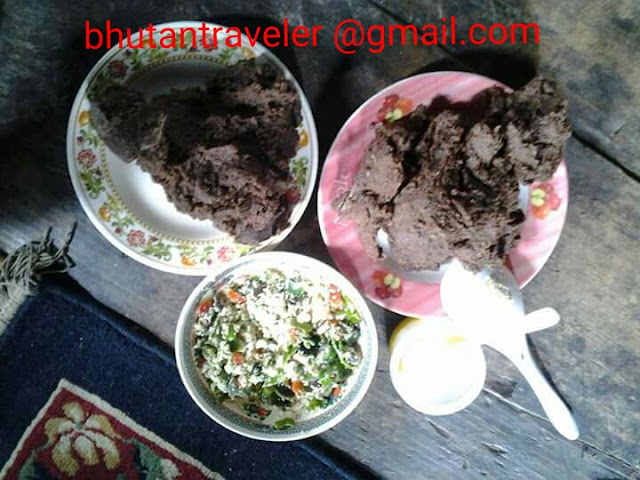 |
| Taktsang Monastery at Paro: Bhutan |
The Fire at Taktsang Monastery
The Dubkhang, the most sacred sanctum of the Taktsang Monastery in Paro, has been found to be safe and a number of the most precious relics and treasures have been retrieved from the ruins of the main monastery, which was severely damaged by fire on Sunday, April 19, 1998.
The Tshennyi Lopon (Master of Dialectical Studies) of the Dratshang (Central Monk Body) explained that the sacred essence of Taktshang was the Dubkhang (also called the Pelphug), the holy cave in which Guru Rimpoche meditated in the 8th century (as did many other renowned saints), and the Kudung (relics) of his disciple, Langchen Pelkyi Singye, which had been placed deep in the rocks under the site of Kudung Chorten.
The sanctity of Taktshang cannot be destroyed by the natural elements, be it fire or water; the Tshennyi Lopon told Kuensel. On April 23, His Majesty the king visited Taktshang and saw the Dubkhang and the religious artifacts that had been recovered. His Majesty commanded the Dratshang, Rabdeys, Shedras and Drubdas, Gomdeys, and all the other religious institutions in the country to offer the Guru Soendoep Dungjor (the offering of 100 million prayers to Guru Rimpoche).
The Chairman of the Special Commission for the Cultural Affairs, Lyonpo Dago Tshering said that, as commanded by His Majesty the King, the government would reconstruct the monastery with its original aura, authenticity and architectural splendor.
The sacred essence of Taktshang, one of the most revered Buddhist nyes (sacred sites) in the world, was established in 8th Century by Guru Rinpoche. The Guru, in the wrathful from the Guru Dorji Drollo, subdues the evil spirits and then meditated in the Pelphug in Taktsang.
Other saints who mediated in the cave include the Milerapa, Phadampa Sangye, Machi Labdoenma, Thangtong Gyalpo and Zhabdrung Ngawang Namgyel.
The main Temple around the Pelphug in Taktsang was constructed in 1692 by the Great 4th Desi Tenzin Rabgyel in between 1961 and 1965 it was renovated by Je Sheldrup Yozer and the latest additions were made in 1982.
The Drupkhang is opened once a year during an annual ceremony. The Tshennyi Lopon explained that 71 members of the monk body performed the annual Guru prayers for 21 daysin the fifth Bhutanese month. As in the past, the prayers will be performed this year as usual in the Dubkhang.
The Tshennyi Lopon said that if the destructions of the Taktshang monastery was a deliberate evil deed then it was a reflection of the decline of the Dharma. But if the monastery was destroyed by natural causes then it is natural for people to perceive it as an inauspicious sign.
“However, what is most important is that the people should avoid superstition and doubt and place their faith in Guru Rimpoche and the Triple Gem,” said Tshennyi Lopon. “We can only safeguard our nation and spiritual heritage with genuine faith in Dharma.”

































